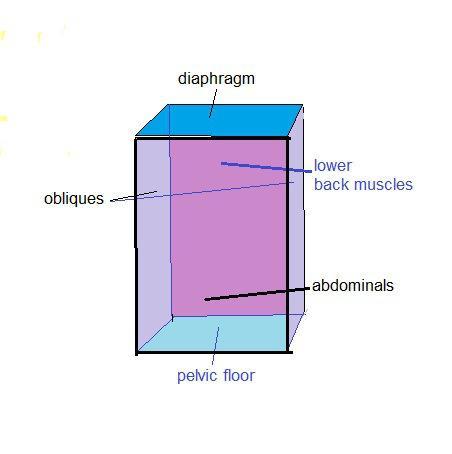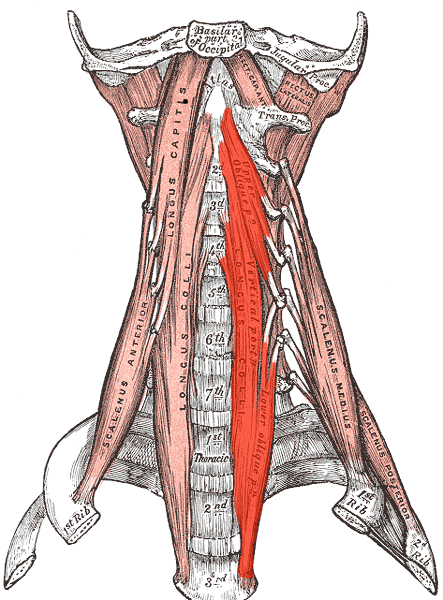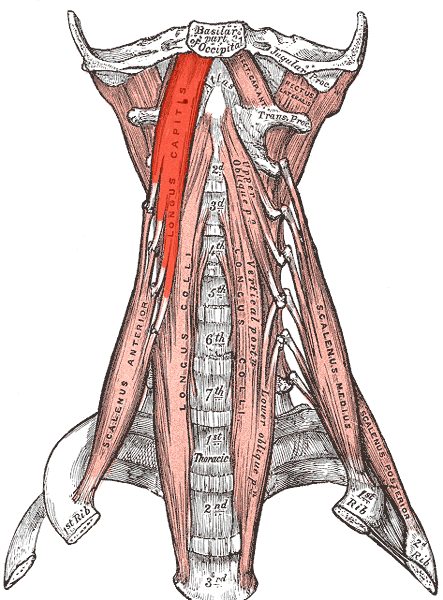Since the neck is part of the spine, it has the same articulations of movement as does the rest of the spine:
- flexion
- extension
- lateral flexion
- rotation
So I am thinking — though do not know yet — that the neck muscles responsible for each type of muscle should have a corresponding core muscle, at least when it comes to the sides of the box:

Pretend this is your core on pretty colors.
I’m hoping that using the core as a reference point will help me keep better track of which neck muscles do which things. We’ll see how long the analogy lasts.

The first action of the neck involves flexion, which is basically the motion involved in bringing the chin toward the chest.
In the core, the muscle that flexes the spine is the rectus abdominis, the relatively superficial muscles we tend to associate with the idea of “six pack abs.”
In the neck, the muscles that flex the cervical spine are the longus colli and longus capitis:

By modified by Uwe Gille (Gray387.png) [Public domain or Public domain], via Wikimedia Commons

By modified by Uwe Gille (Gray387.png) [Public domain or Public domain], via Wikimedia Commons
Put together, the neck flexion muscles look like this, which, I am sad to note, looks almost nothing like the rectus abdominis.
From reading, it appears that while longus colli is a common whiplash injury and thus may need stretching, it is more common for these neck flexors to be elongated and weak. This is because, for a fair number of common contemporary activities — driving, staring at an electronics screen, propping one’s hand on one’s chin in order to appear interested and engaged during staff meetings — the neck is perpetually in extension, with a smaller set of muscles — we’ll get to them, I promise — tilting the head to a more workable angle. I like to think of this as my OMG, Someone Is Wrong on the Internet posture.
Based on that, my next research and writing steps look like this:
- Look for some simple — probably physical therapy-based — movements or exercises focused on strengthening these muscles. (While I don’t necessarily know if I need them for myself — it’s possible, based on my assessment of my posture, but I don’t want to armchair diagnose — I am curious to experience what they might feel like. It’s good to know.)
- Look for some yoga postures where neck flexion comes into play and figure out how this might make a difference.

